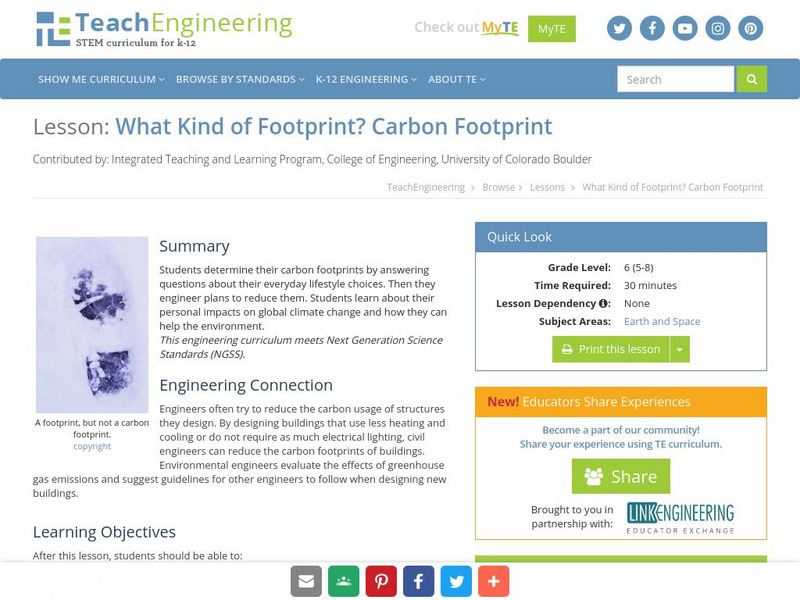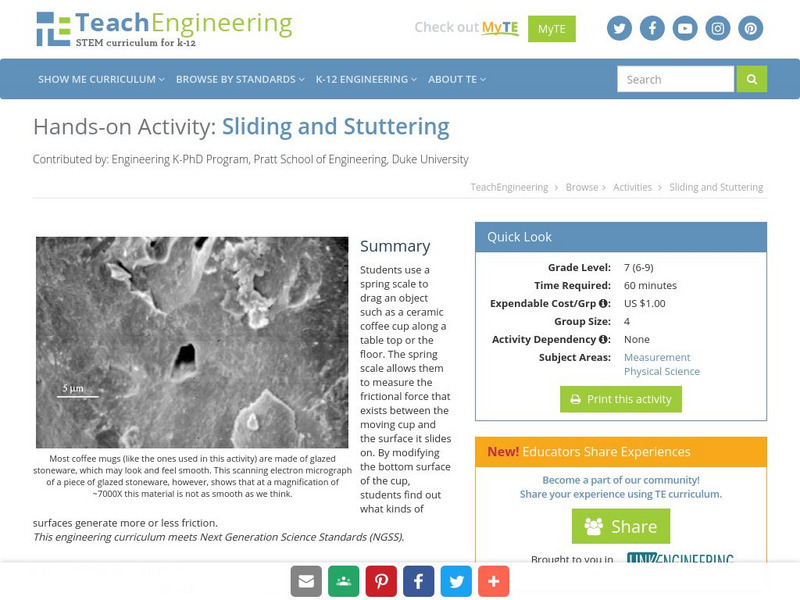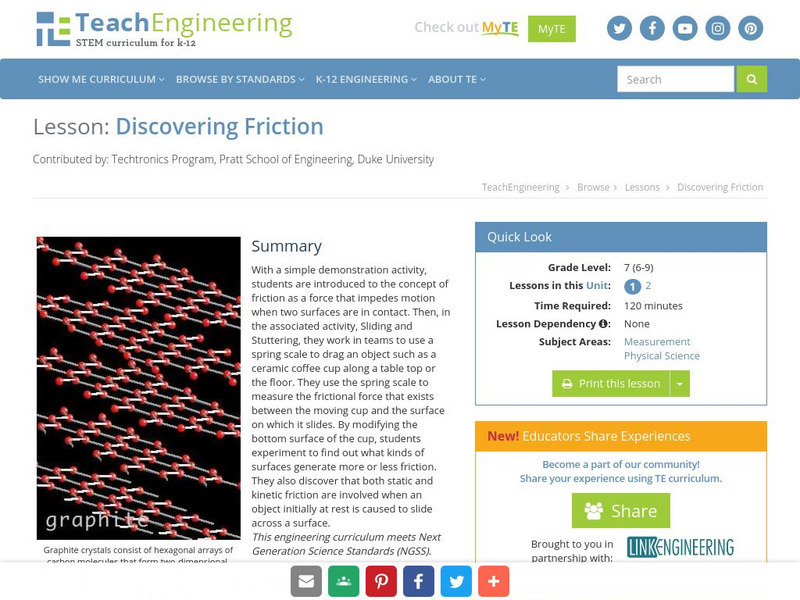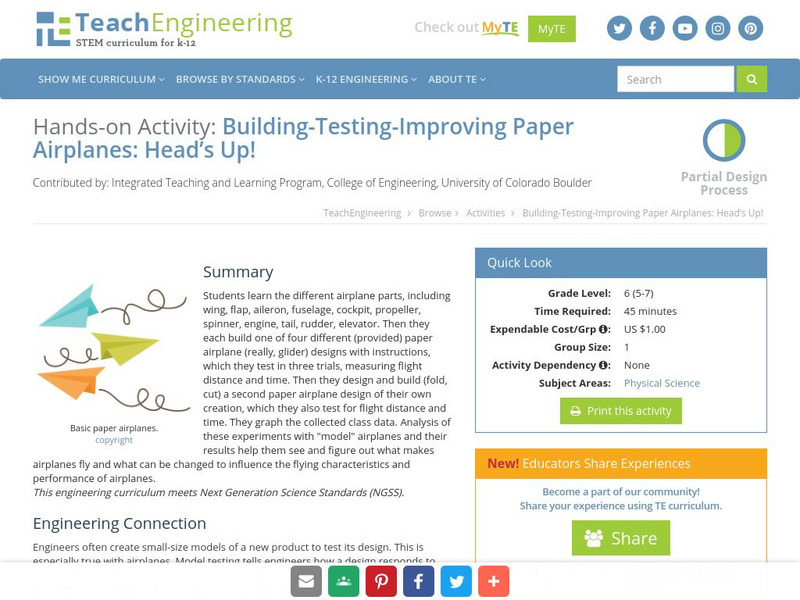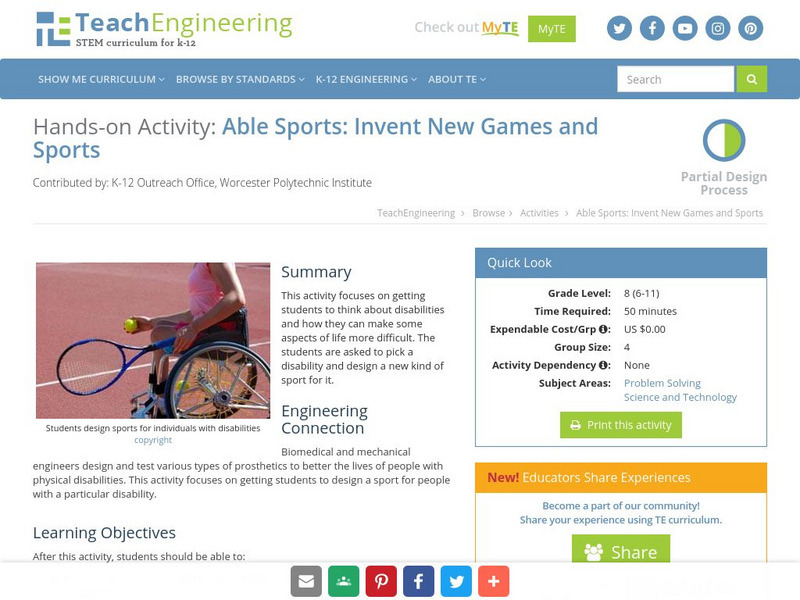TeachEngineering
Teach Engineering: What Kind of Footprint? Carbon Footprint
Young scholars determine their carbon footprints by answering questions about their everyday lifestyle choices. Then they engineer plans to reduce them. Students learn about their personal impacts on global climate change and how they...
University of North Carolina
University of North Carolina: Writing Center: Handouts: Evidence
What kinds of evidence best support the points you make in a paper? Where can you find the evidence you need? This handout answers all these questions and more, including the difference between primary and secondary sources. You'll also...
John F. Kennedy Center
The Kennedy Center: John F. Kennedy Center for the Performing Arts
One of the finest sites of its kind on the Internet, ArtsEdge is dedicated to supporting arts education through such initiatives as curriculum development, cross-curricular teaching, and technology integration. Find arts-related...
PBS
Pbs News Hour: To Report or Not to Report
What kind of principles do reporters adhere to when deciding what to report? This lesson takes a closer look at a piece written to the New York Times regarding the atrocities committed by Saddam Hussein's Regime in Iraq.
TeachEngineering
Teach Engineering: Sliding and Stuttering
Students use a spring scale to drag an object such as a ceramic coffee cup along a table top or the floor. The spring scale allows them to measure the frictional force that exists between the moving cup and the surface it slides on. By...
TeachEngineering
Teach Engineering: Up, Up and Away! Airplanes
The airplanes unit begins with a lesson on how airplanes create lift, which involves a discussion of air pressure and how wings use Bernoulli's Principle to change air pressure. Following the lessons on lift, students explore the other...
TeachEngineering
Teach Engineering: Plot Your Course Navigation
In this unit, students learn the very basics of navigation, including the different kinds of navigation and their purpose. The concepts of relative and absolute location, latitude, longitude and cardinal directions are discussed, as well...
TeachEngineering
Teach Engineering: The Force of Friction
In the first of two lessons of this curricular unit, students are introduced to the concept of friction as a force that impedes motion when two surfaces are in contact. Student teams use spring scales to drag objects, such as a ceramic...
TeachEngineering
Teach Engineering: Discovering Friction
With a simple demonstration activity, students are introduced to the concept of friction as a force that impedes motion when two surfaces are in contact. Then, in the Associated Activity (Sliding and Stuttering), they work in teams to...
Other
Drs. Cavanaugh: Digital Cameras in Education
Learn from other educators what you might need to enhance learning in the classroom with digital cameras. If you want to know what kind of equipment you need or some practical applications, this site is valuable for a novice or...
TeachEngineering
Teach Engineering: Heads Up
The purpose of this activity is to demonstrate some of the different parts of an airplane through the construction of a paper airplane. Students will build several different kinds of paper airplanes in order to figure out what makes an...
TeachEngineering
Teach Engineering: Faulty Movement
In this activity, students are introduced to faults. They will learn about different kinds of faults and understand their relationship to earthquakes. The students will build cardboard models of the three different types of faults as...
TeachEngineering
Teach Engineering: Able Sports
This activity focuses on getting the students to think about disabilities and how they can make some aspects of life more difficult. The students are asked to pick a disability and design a new kind of sport for it.
TeachEngineering
Teach Engineering: Harnessing Wind
This lesson introduces the ways that engineers study and harness the wind. Students will learn about the different kinds of winds and how to measure wind direction. In addition, students will learn how air pressure creates winds and how...
Stanford University
Stanford History Education Group: Augustus
[Free Registration/Login Required] What kind of leader was Caesar Augustus? Chew on this question while integrating this lesson plan and presentation during classroom study on Roman history.
TED Talks
Ted: Ted Ed: A 40 Year Plan for Energy
In this intimate talk filmed at TED's offices, energy innovator Amory Lovins shows how to get the US off oil and coal by 2050, $5 trillion cheaper, with no Act of Congress, led by business for profit. The key is integrating all four...
ReadWriteThink
Read Write Think: Collaborating, Writing, Linking: Use Wiki to Tell Stories Online
This lesson has students create stories that reflect wiki kind of reading. Students begin by reading untraditional books that use fragmented storylines, multiple perspectives, and unresolved plots. They apply these same types of...


